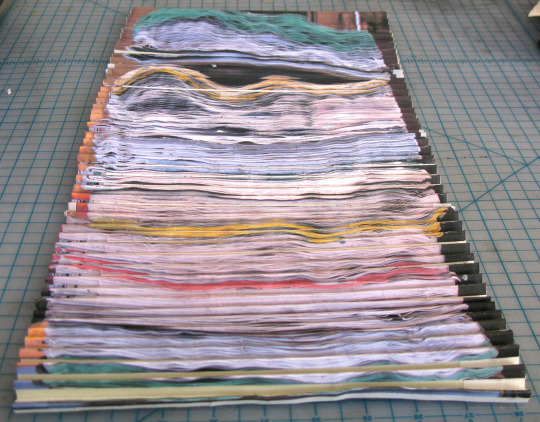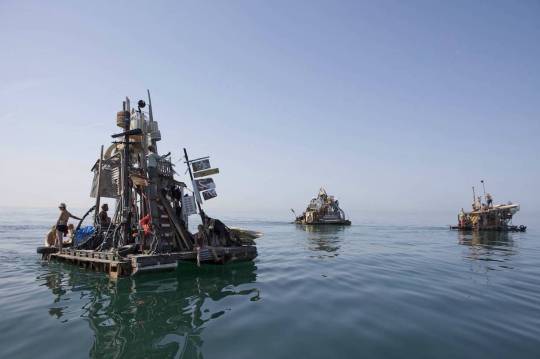Business of Art | Protect Your Work from Flooding with These Three Steps
No matter your discipline, it is imperative to protect your records and your work from water damage.
A major natural disaster is difficult enough without facing the prospect of losing your artistic work. 2019 has brought extreme flooding to several areas of the country, and will likely bring more as the year progresses. Artists across the country are facing greater weather-related threats due to global warming. To help, we’re breaking emergency preparedness down into manageable essentials, starting with flooding, to help all artists feel more confident should they face a natural disaster or other crisis.
There’s a common notion that artists and non-artists alike avoid thinking about emergency preparedness, as it can be a daunting topic and one that requires some legwork to protect yourself. But we’re challenging artists to disprove that idea and flip it on its head. As you set about emergency-proofing your artistic practice as much as possible, you’ll start to notice an exciting perk of being so organized: that you’re more prepared to take advantage of the career-building opportunities that come your way. You can also make the endeavor less overwhelming by working together with a friend in your artist network, and allowing yourself to tackle this project a bit at a time instead of all at once.
Know Your Risks
Start with where you live and work. Are hurricanes common? Is your studio, office, or housing located in a flood zone? You can check your flood risk via this interactive map from The Federal Emergency Management Agency (FEMA). If you are not located in a high-risk flood zone, though, that does not mean you are not at risk. During the Louisiana Floods of 2016, for example, half of the homes in Baton Rouge flooded by storms (almost 30,000) were not located in the high-risk flood zones where lenders require homeowners to have flood insurance. Many of these homeowners did not have flood insurance to help them recover. That’s why FEMA recommends that every homeowner buy flood insurance (renters, we’ll have advice for you below). “If you live in an area with low or moderate flood risk,” says FEMA, “you are five times more likely to experience flood than a fire in your home over the next 30 years.”
Beyond the large-scale storms and floods that you hear about on the news, evaluate your space. Check your plumbing, common fixtures like radiators, and sprinkler systems periodically and fix any leaks. Check out these tips from CERF+ on protecting your work space from flooding, in general and immediately prior to a potential flood. While this checklist caters towards visual artists with studio spaces, it is applicable for artists of all disciplines who want to protect the spaces in which they work and live.

Safeguard Your Records and Your Work
In addition to your creative work, take care to protect your records from water damage. Losing documents related to the business side of your practice, such as receipts, contracts, grant award letters, and other tax and legal documentation could take time and money to replace. It could also prevent you from taking advantage of post-disaster emergency grants and other arts and business opportunities. This kind of documentation is just as essential to your practice as the materials relating to your ongoing creative work, like prototypes, drafts, and collaborator information. A novelist who has lost an important draft of their book with feedback from a critique partner, a dancer who has lost access to a collaboration agreement, and a printmaker whose prints have been damaged during a hurricane would all testify to the importance of preserving all aspects of an artistic practice, from start to finish.
Here are a few key best practices to follow:
- Take stock of what you have by creating an inventory of your work and important items. This list will come in handy should you ever need to file an insurance claim or apply for an emergency grant.
- Don’t store your work or documents in basements, and protect items from moisture from above and below.
- Essential documents and copies of your work should be stored in what CERF+ calls a “Safe Off-site Location,” which is 50-100 miles away from your home or studio.
- Scan important physical copies. Store these and digital files in multiple places, including Google Drive or the Cloud, an external hard drive, or a flash drive. Do periodic backups.
Get Insured and Check Your Paperwork
Your arts career is too valuable to not be insured properly or fully. If you have homeowner’s or renter’s insurance, verify that that insurance covers your “business property”—for example, your studio space in your home or apartment—as well as artwork and other valuables. Read the fine print of your contract and contact a representative from your insurance agency to double check. You may need to consider any of the following options: an in-home business owner’s policy, a business rider on your existing homeowner’s plan, or a separate business insurance policy.
Another critical loophole? Flood damage isn’t covered by many homeowner, renter, and business policies, as a distinction is made between water that rises from below, as opposed to water damage driven by wind or through a damaged roof. As we saw above with the residents of Baton Rouge, it’s “better safe than sorry” when it comes to being insured against floods.
Select Resources
We hope you feel ready to protect your arts career from floods. Remember, it’s ok to work bit-by-bit to achieve a sufficient level of preparedness. Start by exploring the resources below on flood insurance, emergency resources, and the inventory process.
- CERF+’s Artists “Get Ready” Grants and Insurance Hub, including “Flood Insurance for Artists”
- FEMA’s National Flood Insurance Program
- NYFA Source Emergency Resources Portal
- Joan Mitchell Foundation’s Creating a Living Legacy (CALL) Initiative: Career Documentation for the Visual Artist: An Archive Planning Workbook and Resource Guide
Dance Heritage Coalition Artist’s Legacy Toolkit- American Institute for Conservation of Historic and Artistic Works: Wiki for Preservation of Time-Based and Electronic Media
– Mirielle Clifford, Program Officer, Online Resources
Visit NYFA’s full list of emergency resources on NYFA Source, a free directory of over 12,000 opportunities, grants, and services for individual artists nationwide. This post is the first in a series of articles, Protect Your Work, and will be supplemented with a How to Recover from an Emergency series.
You can find more articles on preparedness and other arts career topics by visiting the Business of Art section of NYFA’s website. Sign up for NYFA News and receive artist resources and upcoming events straight to your inbox.
Image: Swoon (Fellow in Architecture/Environmental Structures/Design ’13); Golnar Adili (Fellow in Printmaking/Drawing/Artists’ Books, IAP Mentor ’14, ’18), Folded Chaos, paper sculpture incorporating books and journals damaged by Hurricane Sandy flooding.




